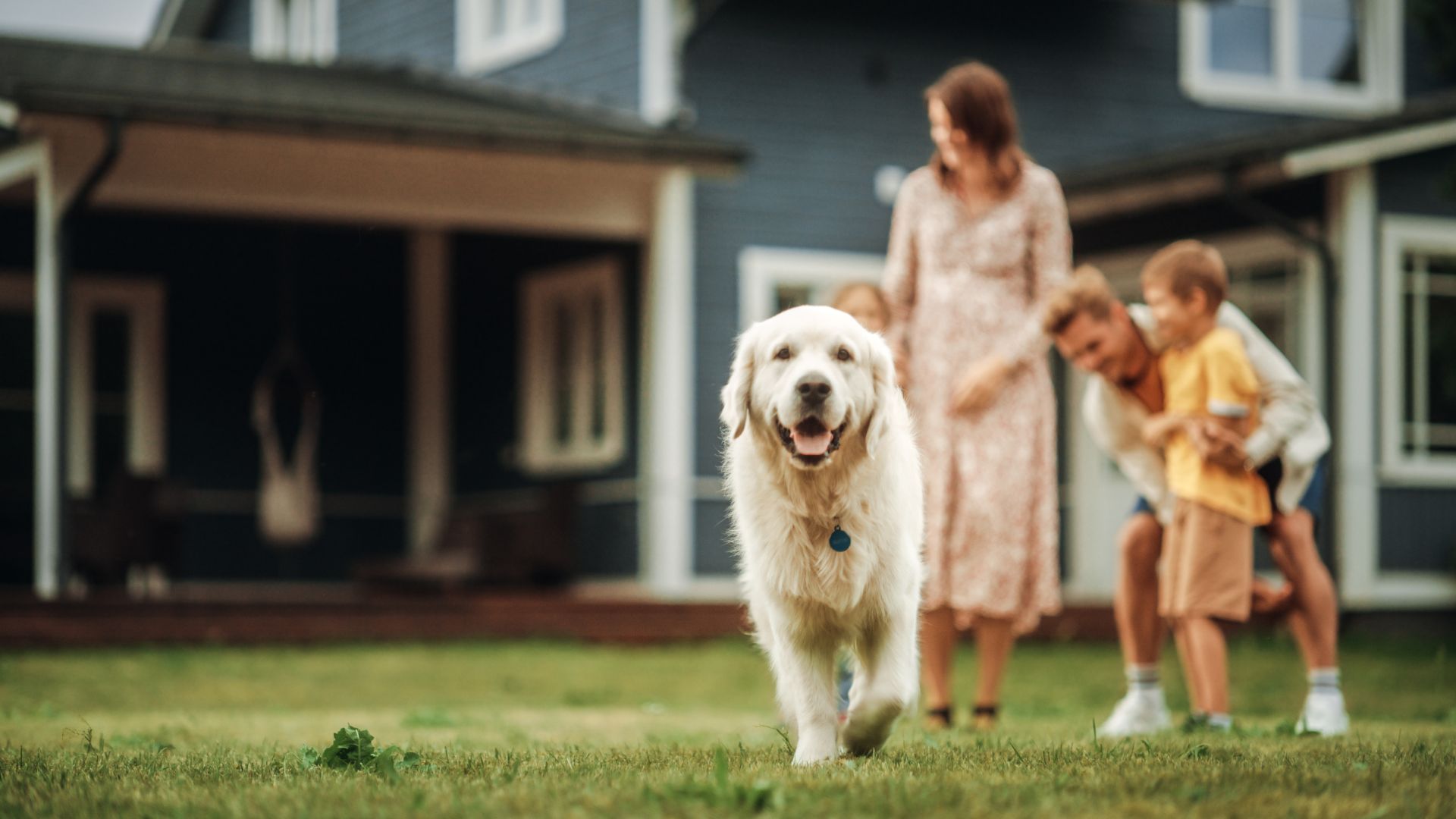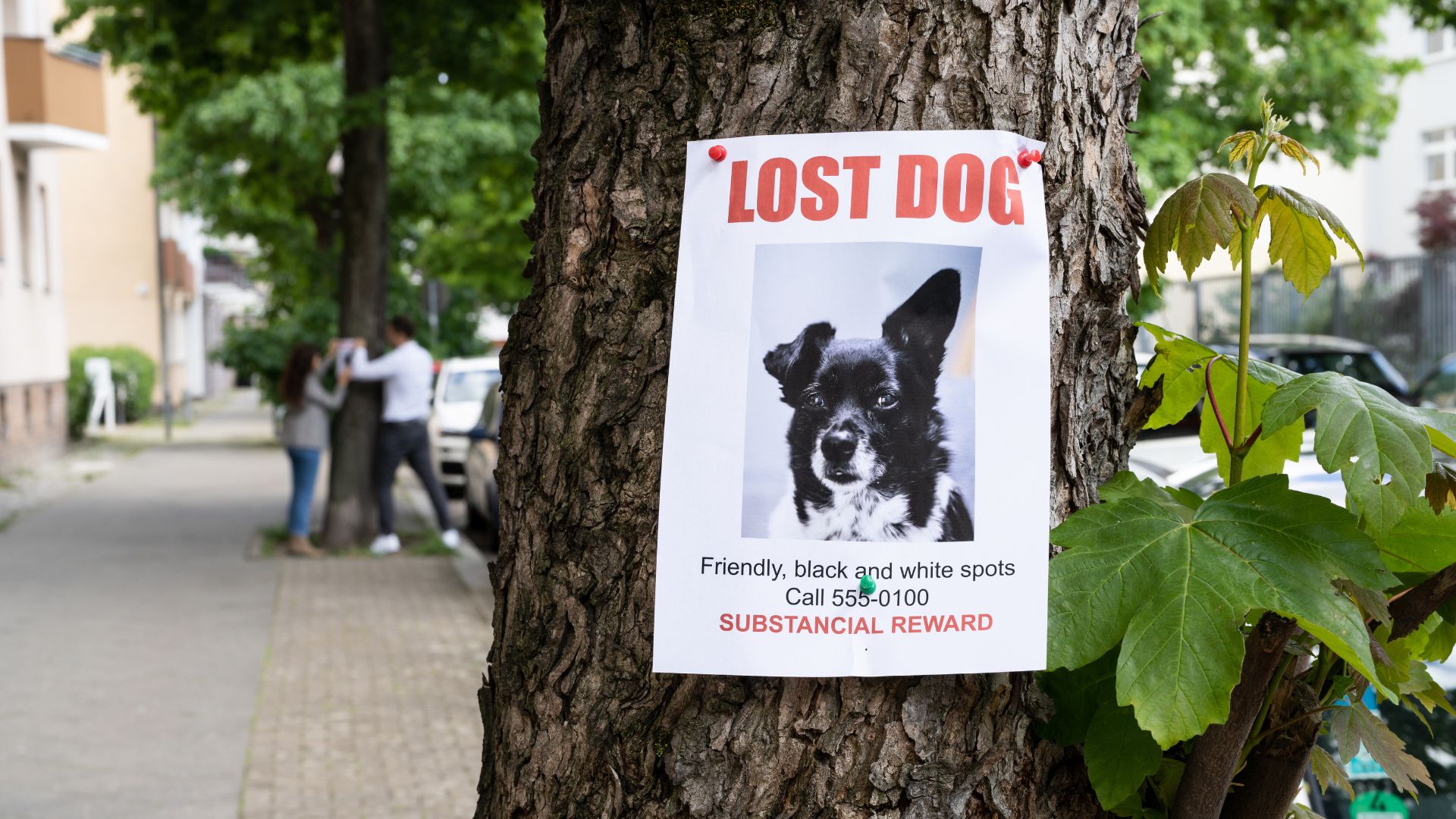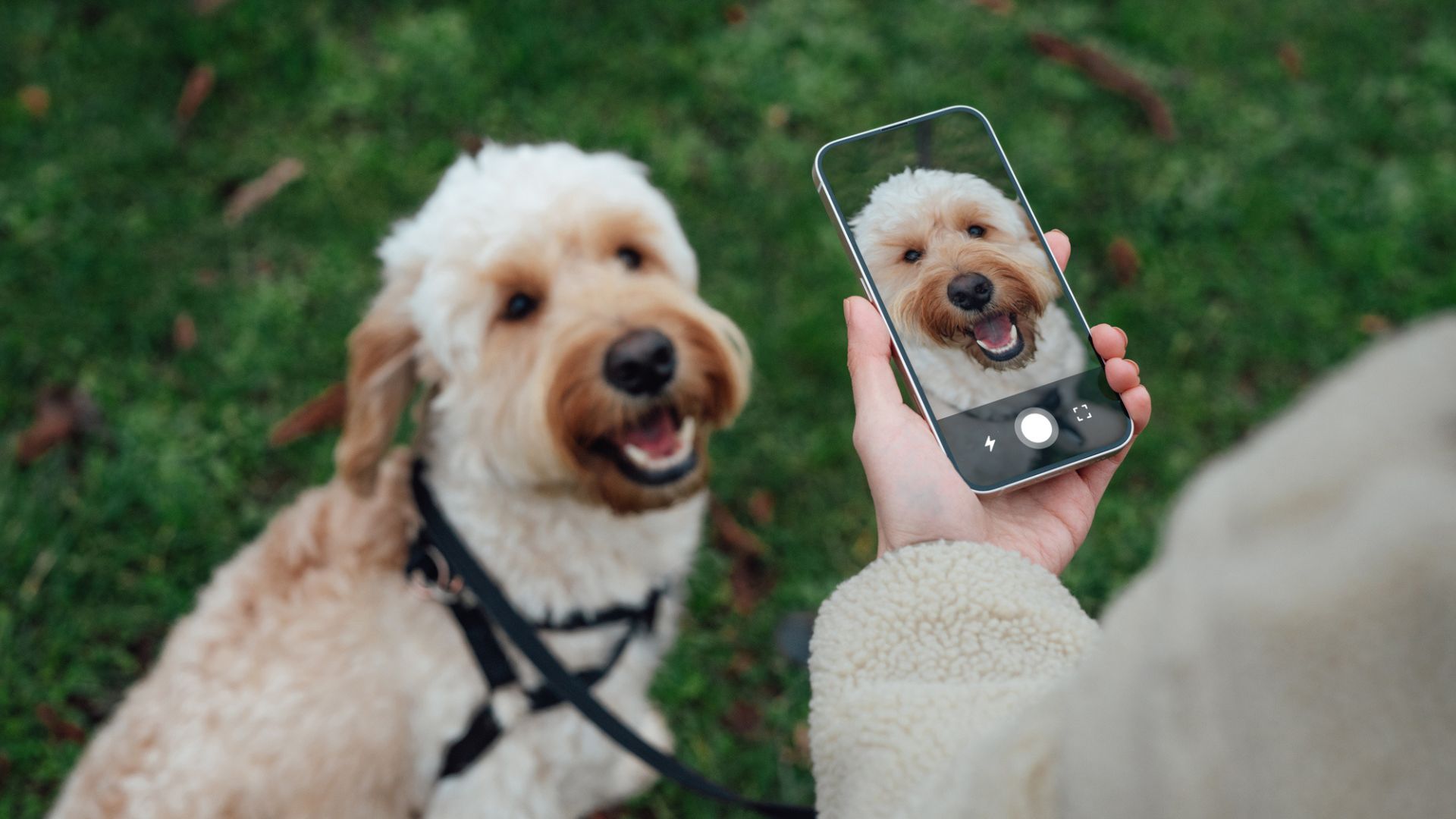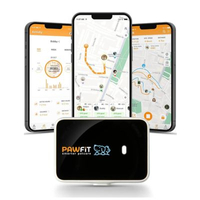How to prevent your dog being stolen
Want to learn how to prevent your dog being stolen? This behaviorist's guide will help keep your dog safe.

Are you one of the many pet parents that worry about your dog being stolen? As a certified canine behaviorist, I know the bond between humans and their dogs is stronger than ever - and the thought of someone taking your companion away from you is a heart-wrenching prospect.
With an increase in sought-after breeds, hiked prices for puppies, and the knowledge of just how important canine members of our family now are - sadly, dogs face increasing risks of being stolen. And as dog theft becomes an increasingly prevalent concern, it's really important that we know what proactive measures we can take to safeguard our pets (such as using one of the best pet trackers)
Here's how you can prevent your dog from falling victim to theft, ensuring both their safety and your peace of mind:
9 ways to prevent your dog being stolen
They say “prevention is better than cure” and this is especially true when it comes to safeguarding your dog from being stolen. Some simple preventative measures can be put into place to make your dog harder for would-be thieves to access or easier to find should the unthinkable happen.
- Microchip your dog: Microchipping your dog is a legal obligation in some US states and countries around the world. Whether it’s a legal requirement or not, it’s highly advantageous to get your dog microchipped, ensuring that you also keep your microchip contact information up to date. This simple act can help in recovering your dog if it's stolen and found - and prove your ownership of the dog should it be contested.
- Use a GPS tracker: Invest in a GPS tracking collar or tag for your dog. This tool allows you to monitor your dog's location in real-time and quickly track them if they go missing. Make sure that you’ve checked out what areas your tracker covers - some work internationally - and if there are any limitations, such as access to the internet, for them to work.
Pawfit 3 GPS Pet Tracker GPS Dog Tracker
The Pawfit offers real time GPS tracking so you can always know where your dog is. You can set a safe zone around your home, with alerts indicating if your dog has escaped out of this area. Not only does this offer you a level of comfort in your dog’s safety, but you can also track your dog’s physical activity and rest to ensure their overall wellbeing.
- Secure your yard and home: Make sure your yard is secure with strong, high fencing and locks on your gates. Regularly check the perimeter of your yard for any gaps in fencing or holes your dog - or another animal - may have dug. If your dog is securely on your property they’re less likely to be found by someone else. Keep your front and back doors locked - and avoid leaving ground floor windows wide open.
- Supervise outdoor time: It might sound simple, but by keeping an active watch over your dog’s outside time, you’re increasing your chances of deterring any potential theft. Don't leave your dog unattended in your yard, even if it's fenced, as thieves can easily snatch them.

- Avoid leaving dogs in cars: Temperature concerns aside, leaving your dog in a car also makes them an easy target for thieves. Never leave your dog alone in a car, even for a short period.
- Protect your personal information: Be mindful of what you share about your dog on social media. Avoid posting details about their daily routine or specific locations you frequent, especially if you have a ‘desirable breed’ or your social accounts aren’t restricted to just known friends and family. Most local laws don’t stipulate that you need to name your dog on their collar - and it’s best to avoid letting a potential dog thief know what your dog’s name is, so that they can’t appear to know your dog.
- Invest in security cameras: While cameras inside your home are great for monitoring your dog’s emotional wellbeing when they’re left home alone - external cameras can help you keep an eye on any potential intruders. There are plenty of options for you to choose from for the best outdoor wireless cameras for pets, so see what is going to work best for your property.
Arlo Floodlight Security Camera Outdoor + PIR
This camera provides outdoor security, so you can deter any potential intruders to keep your pet safe. It offers 160° wide angle viewing so you can view your property. And has the added benefit of being able to set up activity alerts so you know when someone comes onto your land.
- Keep your dog safe both on and off-the leash: Ensure that your dog’s harness and leash are in good condition - with no fraying that could lead to breaks and your dog disappearing on you. Keep up with you recall training to ensure your dog doesn’t go roaming out of sight, setting them up for being found by someone undesirable.
- Build a local network: Get to know your neighbors and build a network with other pet parents in your area. They can help keep an eye out for your dog and report any suspicious activity in the neighborhood.
By taking these precautions, you can significantly reduce the risk of your beloved dog being stolen.
What do you do if someone steals your dog?
If the worst happens and your dog is taken from you, the most important thing to do is to try and stay calm so that you can act quickly and efficiently. Take deep breaths and try to stay as calm as possible.
1. Start by conducting a thorough search of the surrounding area to ensure your dog hasn’t just gone walk-about.
PetsRadar Newsletter
Get the best advice, tips and top tech for your beloved Pets
2. Call your dog’s name and check any potential hiding spots or spaces they may have got trapped in.
3. Call someone to come down and help you. Have one person in the original location you last saw your dog and one - or hopefully more - searching.
4. Make sure you create a timeline of events - noting down the time and place where your dog was last seen. Ask around your neighborhood and identify potential witnesses - asking if they saw anything unusual or suspicious.
5. As soon as possible, report your dog as missing to local animal control, shelters, rescues and vet centers. Provide them with detailed information including a recent photo of your dog.

6. If your dog is microchipped, notify your microchip company as soon as you can. If you’ve forgotten to update any contact information, do so when you speak to them.
7. Contact your local police department to file a theft report. Provide them with all relevant information you’ve gathered including a clear description of your dog and their last known location. If you have any footage from cameras which might feature suspected individuals or vehicles, download this and pass it over to the authorities as soon as possible.
8. As well as contacting your neighbors for support, reach out to your wider local community. Post on local dog owner social media groups and contact a range of pet professionals in your area who might have their own community to contact on your behalf. Make sure you include clear photos, a description, and contact information. There are also a number of online lost pet databases that you can register your dog on.
9. Create a poster with a clear photo of your dog, a detailed description, and your contact details. If possible, you can even offer a reward to try and encourage people to come forward. Ask friends and family to help you distribute these posters in local dog-walking areas such as parks, as well as in your local vets, groomers, and pet stores.
How to increase your chances of finding a stolen dog
To increase your chances of recovering a stolen dog, proactive preparation is crucial.
Have important information easily accessible
Be prepared with a list of local vets, your dog warden, and any other useful contacts pinned to your fridge! Make sure you have your dog’s microchip number saved somewhere easy to find. Write down a list of contacts - such as local friends, family, dog walkers, or rescue centers - who might be useful to reach out to for help should the worst happen.
Take regular photos of your dog from different angles
Although as pet parents who adore our dogs, we usually have a phone filled with pictures of our dogs - make sure you’re keeping these up-to-date. Take pictures from every angle of your dog, to make sure all markings can be seen. If your dog has any unique features, make sure these are also documented. These images will be useful to both identify your dog as your own, but also for any posters or social media posts you share.

Make sure your dog is identifiable
As well as microchipping your dog, make sure their collar has your up-to-date information. If you move home, make sure your insurance company and microchip database are updated with your current address and contact information. While many local laws don’t state the need for your contact number on your dog’s ID tag, it can help to put it on there to get reconnected to your dog quickly once they’re found.
GPS Tracker
GPS devices can provide real-time location data, significantly increasing the chances of quick recovery if your dog is stolen.
If you’re wondering what to do if you find a lost dog, we’ve got you covered. And if you want more tips on how to find a lost dog read our guide.

Caroline Wilkinson is a Certified Animal Behaviorist. She is a Full (assessed) Member of the APDT and INTODogs – as well as a Registered Training Instructor (ABTC). Caroline is also a Certified Real Dog Yoga Practitioner and an Applied Canine Zoopharmacognosist.


